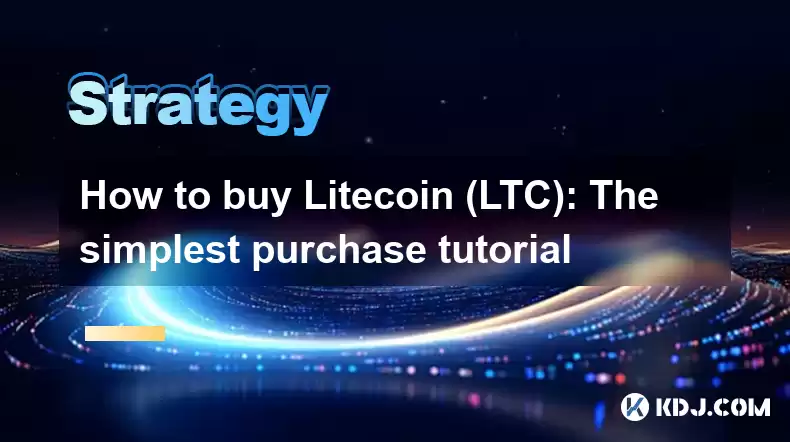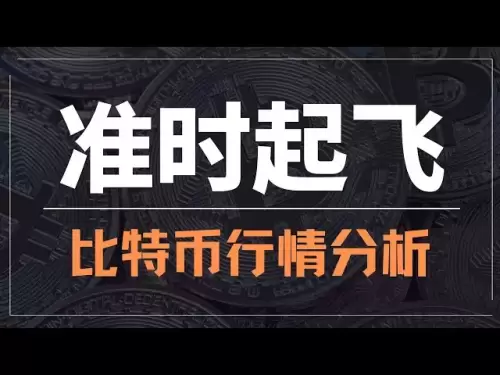-
 Bitcoin
Bitcoin $116400
0.87% -
 Ethereum
Ethereum $3819
3.86% -
 XRP
XRP $3.048
1.62% -
 Tether USDt
Tether USDt $1.000
0.03% -
 BNB
BNB $777.2
0.60% -
 Solana
Solana $169.3
0.46% -
 USDC
USDC $0.0000
0.02% -
 TRON
TRON $0.3414
2.06% -
 Dogecoin
Dogecoin $0.2126
3.33% -
 Cardano
Cardano $0.7527
1.21% -
 Hyperliquid
Hyperliquid $38.86
1.02% -
 Sui
Sui $3.683
5.27% -
 Stellar
Stellar $0.4048
1.45% -
 Chainlink
Chainlink $17.91
6.62% -
 Bitcoin Cash
Bitcoin Cash $576.9
1.29% -
 Hedera
Hedera $0.2487
1.03% -
 Ethena USDe
Ethena USDe $1.001
-0.01% -
 Avalanche
Avalanche $22.46
1.07% -
 Litecoin
Litecoin $120.8
1.69% -
 UNUS SED LEO
UNUS SED LEO $8.963
-0.30% -
 Toncoin
Toncoin $3.301
2.33% -
 Shiba Inu
Shiba Inu $0.00001250
1.13% -
 Uniswap
Uniswap $10.06
3.45% -
 Polkadot
Polkadot $3.731
1.56% -
 Dai
Dai $1.000
0.01% -
 Bitget Token
Bitget Token $4.416
1.58% -
 Cronos
Cronos $0.1482
3.73% -
 Monero
Monero $250.0
-12.34% -
 Pepe
Pepe $0.00001075
2.16% -
 Aave
Aave $274.6
4.17%
How to buy Litecoin (LTC): The simplest purchase tutorial
To buy Litecoin, choose a reputable exchange like Coinbase or Binance, deposit funds, purchase LTC, and consider transferring it to a personal wallet for security.
Apr 10, 2025 at 05:42 am

Buying Litecoin (LTC) can be a straightforward process if you follow the right steps. Litecoin, often referred to as the silver to Bitcoin's gold, is a popular cryptocurrency that can be purchased on various exchanges. In this tutorial, we will guide you through the simplest way to buy Litecoin, ensuring you understand each step thoroughly.
Choosing a Cryptocurrency Exchange
The first step in buying Litecoin is to choose a reputable cryptocurrency exchange. Exchanges like Coinbase, Binance, and Kraken are well-known and trusted platforms where you can buy Litecoin. When selecting an exchange, consider factors such as fees, security, user interface, and the availability of Litecoin in your region.
- Visit the exchange's website and sign up for an account. You will need to provide personal information such as your name, email address, and sometimes a phone number.
- Complete the verification process. Most exchanges require you to verify your identity to comply with regulatory standards. This usually involves uploading a government-issued ID and possibly a proof of address.
- Secure your account by enabling two-factor authentication (2FA). This adds an extra layer of security to your account, making it harder for unauthorized users to access your funds.
Depositing Funds into Your Exchange Account
Once your account is set up and verified, you need to deposit funds into your exchange account. Most exchanges allow you to deposit funds using various methods such as bank transfers, credit/debit cards, or even other cryptocurrencies.
- Navigate to the deposit section of the exchange. Here, you will see different options for depositing funds.
- Choose your preferred deposit method. If you are using a bank transfer, you will need to provide your bank details and initiate the transfer. For credit/debit card deposits, you will need to enter your card information.
- Wait for the funds to be credited to your exchange account. This can take anywhere from a few minutes to several days, depending on the method you chose.
Buying Litecoin on the Exchange
With funds in your exchange account, you are now ready to buy Litecoin. The process is generally similar across different exchanges, but we will use Coinbase as an example.
- Go to the trading section of the exchange. Look for the Litecoin (LTC) trading pair, such as LTC/USD or LTC/BTC.
- Enter the amount of Litecoin you want to buy. You can either enter the amount in Litecoin or the amount of money you want to spend.
- Review the order details. Make sure you are comfortable with the price and the amount of Litecoin you are buying.
- Confirm the order. Once you confirm, the exchange will execute the trade, and the Litecoin will be credited to your exchange wallet.
Withdrawing Litecoin to a Personal Wallet
For added security, it is recommended to transfer your Litecoin from the exchange to a personal wallet. There are various types of wallets available, including hardware wallets, software wallets, and paper wallets.
- Choose a wallet that suits your needs. For beginners, a software wallet like Exodus or Trust Wallet can be a good starting point.
- Set up your wallet according to the provider's instructions. This usually involves downloading the wallet software and creating a new wallet address.
- Go back to the exchange and navigate to the withdrawal section.
- Enter the amount of Litecoin you want to withdraw and the wallet address you generated.
- Confirm the withdrawal. The Litecoin will be sent to your personal wallet, and you will receive a transaction ID for tracking purposes.
Understanding Fees and Transaction Times
When buying Litecoin, it's important to be aware of the fees involved and the time it takes for transactions to be processed. Exchanges typically charge a fee for buying and selling cryptocurrencies, which can vary based on the payment method and the volume of the trade. Additionally, withdrawing Litecoin to a personal wallet may incur a network fee.
- Check the fee structure of the exchange before making a purchase. Some exchanges offer lower fees for using certain payment methods or for trading larger volumes.
- Understand the transaction times. Depositing funds into an exchange can take anywhere from a few minutes to several days, depending on the method. Buying Litecoin on the exchange is usually instant, but withdrawing it to a personal wallet can take some time due to network congestion.
Monitoring Your Litecoin Investment
After buying Litecoin, it's important to keep an eye on your investment. Use tools like price trackers and portfolio management apps to stay updated on the value of your Litecoin. Many exchanges also offer features to help you monitor your investments directly on their platform.
- Set up price alerts to notify you when Litecoin reaches certain price levels. This can help you make informed decisions about buying or selling.
- Regularly review your portfolio to ensure it aligns with your investment goals. Consider diversifying your investments to mitigate risk.
Frequently Asked Questions
Q: Can I buy Litecoin with cash?
A: Yes, some exchanges and peer-to-peer platforms allow you to buy Litecoin with cash. However, this method is less common and may involve meeting in person or using a cash deposit at a bank.
Q: Is it safe to store Litecoin on an exchange?
A: While exchanges have security measures in place, it is generally safer to store your Litecoin in a personal wallet. Exchanges can be vulnerable to hacks, and you have more control over your funds in a personal wallet.
Q: How long does it take to buy Litecoin?
A: The time it takes to buy Litecoin depends on the deposit method and the exchange's processing times. Depositing funds can take anywhere from a few minutes to several days, while the actual purchase of Litecoin is usually instant.
Q: Can I buy Litecoin anonymously?
A: Buying Litecoin anonymously is challenging due to regulatory requirements. Most exchanges require identity verification to comply with anti-money laundering (AML) and know your customer (KYC) regulations. However, some decentralized exchanges and peer-to-peer platforms may offer more privacy.
Disclaimer:info@kdj.com
The information provided is not trading advice. kdj.com does not assume any responsibility for any investments made based on the information provided in this article. Cryptocurrencies are highly volatile and it is highly recommended that you invest with caution after thorough research!
If you believe that the content used on this website infringes your copyright, please contact us immediately (info@kdj.com) and we will delete it promptly.
- Pi Coin's dApp and AI Potential: Building a Decentralized Future
- 2025-08-08 02:30:12
- Bitcoin, Greenidge, and Liquidity: Navigating the Crypto Currents in NYC
- 2025-08-08 02:30:12
- Crypto Phishing Alert: $3 Million USDT Loss Highlights DeFi Risks
- 2025-08-08 01:10:12
- Crypto Presale Mania: Is Punisher Coin the High ROI King?
- 2025-08-08 01:10:12
- Online Betting, Platforms & Crypto Access: What's Hot in 2025
- 2025-08-08 00:50:12
- Layer Brett: The Meme Coin Primed for 100x Gains?
- 2025-08-08 01:50:12
Related knowledge

How to avoid common crypto investment mistakes?
Jul 13,2025 at 01:35am
Understanding the Risks of Crypto InvestmentInvesting in cryptocurrency can be highly rewarding, but it also comes with significant risks. One of the ...

What is a long-short crypto strategy?
Jul 15,2025 at 10:56am
Understanding the Basics of a Long-Short Crypto StrategyA long-short crypto strategy is an investment approach where traders simultaneously take long ...

What is a long-short crypto strategy?
Jul 11,2025 at 01:28pm
Understanding the Basics of Long-Short Crypto StrategyA long-short crypto strategy is an investment approach where traders take both long and short po...

How to use the RSI indicator for crypto?
Jul 12,2025 at 03:56pm
Understanding the RSI Indicator in Cryptocurrency TradingThe Relative Strength Index (RSI) is a momentum oscillator used to measure the speed and chan...

Is copy trading a good strategy for crypto beginners?
Jul 12,2025 at 08:28am
Understanding Copy Trading in the Cryptocurrency MarketCopy trading is a strategy where novice traders replicate the trades of experienced investors a...

How to build a crypto portfolio with $1000?
Jul 13,2025 at 08:14pm
Understanding the Basics of Cryptocurrency InvestmentBuilding a crypto portfolio with $1000 starts with understanding the fundamentals of cryptocurren...

How to avoid common crypto investment mistakes?
Jul 13,2025 at 01:35am
Understanding the Risks of Crypto InvestmentInvesting in cryptocurrency can be highly rewarding, but it also comes with significant risks. One of the ...

What is a long-short crypto strategy?
Jul 15,2025 at 10:56am
Understanding the Basics of a Long-Short Crypto StrategyA long-short crypto strategy is an investment approach where traders simultaneously take long ...

What is a long-short crypto strategy?
Jul 11,2025 at 01:28pm
Understanding the Basics of Long-Short Crypto StrategyA long-short crypto strategy is an investment approach where traders take both long and short po...

How to use the RSI indicator for crypto?
Jul 12,2025 at 03:56pm
Understanding the RSI Indicator in Cryptocurrency TradingThe Relative Strength Index (RSI) is a momentum oscillator used to measure the speed and chan...

Is copy trading a good strategy for crypto beginners?
Jul 12,2025 at 08:28am
Understanding Copy Trading in the Cryptocurrency MarketCopy trading is a strategy where novice traders replicate the trades of experienced investors a...

How to build a crypto portfolio with $1000?
Jul 13,2025 at 08:14pm
Understanding the Basics of Cryptocurrency InvestmentBuilding a crypto portfolio with $1000 starts with understanding the fundamentals of cryptocurren...
See all articles

























































































